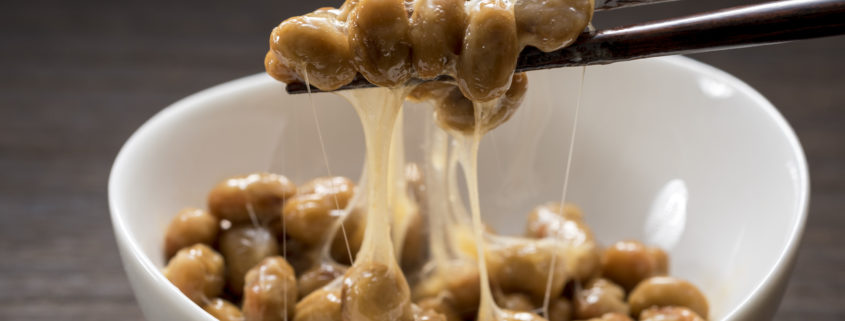Natto industry members meet for annual Natto Summit
Twenty-three Japanese natto soybean buyers – along with natto suppliers from North Dakota, Minnesota, Michigan, Arkansas and Ohio – gathered in Fargo, N.D., Sept. 3-5, for the third annual U.S. – Japan Natto Summit. The event was organized by the U.S. Soybean Export Council (USSEC) with the Specialty Soya and Grains Alliance (SSGA) serving as a partner.
Natto, a traditional Japanese food made from fermented soybeans, is often eaten for breakfast and is popular in Japan for its health benefits. Fermentation breaks down the proteins in the soybean, making it easier to digest than whole soybeans. Natto soybeans are small, with a clear hilum and thin seed coat.
Natto Summit attendees heard from experts regarding challenges and promotion activities in the natto industry, U.S. and global food trends, soybean production, agricultural technology, transportation, commodity supply and demand, gene editing and more. A common theme among speakers was the current declining agriculture economy that U.S. farmers are enduring.
Soybean ending stocks for 2018/2019 were a record high at 114.53 million metric tons (MMT), about 15 percent larger than the previous record set last year. A continued oversupply creates opportunity for producers to choose specialty beans.
“With commodity soybean production well below breakeven for most farmers, now is a great time to choose a premium crop,” says Dave Spickler of Lighthouse Commodities. “Growers need to think of ways to diversify.”
With natto producers, distributers and buyers all in one place, attendees were able to develop personal relationships and discuss issues in the industry.
“The Natto Summit is a great example of the farm-to-table relationship building with identity-preserved soya that’s needed in this era of a tough trade environment,” says SSGA Executive Director Eric Wenberg. “Japan’s natto industry and its associations and companies set the global standard for marketing and supporting their livelihoods by working together. The fact that the U.S. can be an origin and work with buyers to create exactly the crop characteristics they want for the product isn’t a niche – it’s an example of how building specific pathways for exports works well.”
Masako Tateishi, North Asia regional human utilization director for USSEC, agrees that relationships help create a successful Natto Summit and trade business.
“The Natto Summit allows buyers to get together with the rest of the industry to discuss challenges and opportunities and maybe create more natto sales in an industry that is growing in Japan,” Tateishi says. “Natto buyers also enjoy touring the facilities and seeing how the soybeans are handled safely and reliably.”
Three food grade soybean plants – SB&B Foods, Inc. in Casselton, N.D., Brushvale Seed in Breckenridge, Minn., and Richland IFC in Dwight, N.D. – hosted tours of their soybean research plots, breeding nurseries and facilities, where attendees saw each step in the food grade soybean cleaning process.
“Against Japan’s demographic changes, natto interest is growing. The Natto Summit shows how we all contribute to improve U.S. soy – the USDA Foreign Agricultural Service (FAS) with its Agricultural Trade Promotion (ATP) funds, USSEC’s international organization muscle, and other soy partners in the United Soybean Board (USB) and the American Soybean Association (ASA),” Wenberg says. “The Qualified State Soybean Boards (QSSBs) from North Dakota, Minnesota, and Wisconsin put their grower funds into supporting a great event that SSGA was also happy to contribute to.”







Leave a Reply
Want to join the discussion?Feel free to contribute!